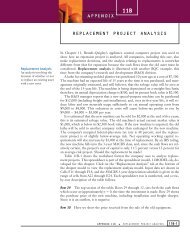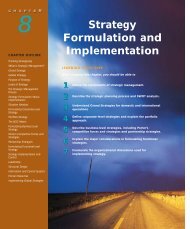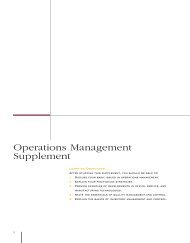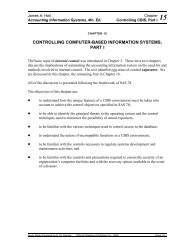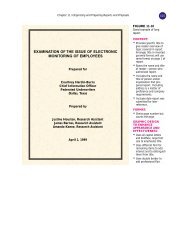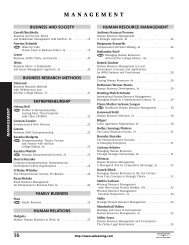The Keynesian Cross
The Keynesian Cross
The Keynesian Cross
Create successful ePaper yourself
Turn your PDF publications into a flip-book with our unique Google optimized e-Paper software.
<strong>The</strong> <strong>Keynesian</strong> <strong>Cross</strong> 11<br />
one that gets at the essentials and ignores the less-important elements, when solving an economic<br />
problem.<br />
Government Purchases, Taxes, and the Balanced-Budget Multiplier<br />
<strong>The</strong> <strong>Keynesian</strong>-cross model is often used to provide insight into changes in fiscal policy, the<br />
counter-cyclical expenditure and tax policy of the federal government. Earlier, we developed the<br />
multiplier based on a change in autonomous government purchases. Now, we want to see what<br />
happens when taxes change. Finally, we want to examine balanced-budget changes, which occur<br />
when the government changes both spending and taxes by the same amount. (Since the possibility<br />
that government purchases might depend on income doesn’t matter for what we’re going to<br />
do, we’ll return to the simple model in which only consumption depends on income.)<br />
First, let’s see what happens if the government increases taxes by some amount, say $100<br />
billion. We are thinking of taxes, a lump of dollars paid that is often called “lump sum” taxes or<br />
fixed taxes. In other words, taxes which do not depend on the level of income. We’ll assume that<br />
consumers pay the taxes, so the effect of the tax increase is just like a reduction in consumers’<br />
incomes. How much will consumers reduce their spending? Since the tax increase is like a reduction<br />
in income, consumers will reduce their spending by the amount of the tax increase times the<br />
marginal propensity to consume. If the marginal propensity to consume is 3/4, as in the example<br />
we discussed earlier, then consumers will reduce their spending by $75 billion. Thus aggregate<br />
expenditure will decline by $75 billion because of the direct impact of the higher taxes. And what<br />
will happen in equilibrium? As Figure 9 shows, with aggregate expenditure $75 billion less, the<br />
new equilibrium level of output is lower by the multiplier (4) times the change in aggregate expenditure<br />
($75 billion), which equals $300 billion. So output in the economy declines from $8 trillion<br />
to $7.7 trillion.<br />
So, just as there’s a multiplier effect on government purchases, there’s also one on taxes. But<br />
there’s an important difference between the two cases. When we looked at an increase in government<br />
purchases, we found that output changed in the same direction by the multiplier times the<br />
change in government purchases. But in the case of an increase in taxes, output changes in the<br />
opposite direction by the multiplier times an amount equal to the marginal propensity to consume<br />
times the change in taxes. In the example, the tax increase of $100 billion caused aggregate expenditure<br />
to decline by 3/4 $100 billion, which equals $75 billion. So a change in taxes of a given<br />
amount affects aggregate expenditure by less than that amount, because the marginal propensity<br />
to consume is less than one.<br />
This fact means that when the government changes both government purchases and taxes by<br />
the same amount, an event that some economists call a balanced-budget change in fiscal policy,<br />
there’s still an effect on output. We use the term balanced budget to call attention to the fact that<br />
both taxes and government expenditures change by the same amount. For example, if the government<br />
increases its purchases by $100 billion and pays for the increased purchases by raising<br />
$100 billion of additional taxes, the increase in government purchases increases aggregate expenditure<br />
by $100 billion, but the increase in taxes reduces aggregate expenditure by only 3/4 $100<br />
billion, which equals $75 billion. So the net effect is an increase in aggregate expenditure of $25<br />
billion. With a marginal propensity to consume of 3/4, the multiplier is 4, so the total impact on<br />
output is 4 $25 billion = $100 billion. Similarly, a balanced-budget decrease in government<br />
purchases and an equivalent decrease in taxes of $100 billion would lead to a reduction in aggregate<br />
expenditure of $25 billion, which would lead to a decline in output of $100 billion.<br />
Because the change in government purchases increases output by the multiplier times the<br />
change in purchases, while a change in taxes decreases output by the multiplier times the change



